For King and Country
- Thread starter unmerged(28944)
- Start date
-
We have updated our Community Code of Conduct. Please read through the new rules for the forum that are an integral part of Paradox Interactive’s User Agreement.
You are using an out of date browser. It may not display this or other websites correctly.
You should upgrade or use an alternative browser.
You should upgrade or use an alternative browser.
Great update Draco, really cool to see the flags and read of the act. Interesting to see that they way to solve India and their representation is to put it on hold, and by 41 you might be at war so then you can put it on hold again, clever move 
Looking forward to more
Looking forward to more
Oh draco, you always know how to keep me reading
Awesome update dude, keep em coming
(it would be funny if George sends some former wayward colonies the chance to re-enter the empire... just imagine the IC and manpower :wacko: )
Awesome update dude, keep em coming
(it would be funny if George sends some former wayward colonies the chance to re-enter the empire... just imagine the IC and manpower :wacko: )
sainte-therese - Yepper!
GeneralPaisley - I dunno, that red hand might remind people of some of the Irish leaderships communist past, which would not endear them to many, eh?
Lord E - thankee, sir! I do try! I'm working on some tech updates now.
Maximilliano - Thanks. As for wayward colonies coming back to the Empire.... while it would be a nice idea (one that George would jump on if the request came of course ), I do believe that the aforementioned wayward colony has far to much history under the bridge to realistically (even in this AAR) to it be even close to a remote possibilty! 'Tis a pity though, isn't it?
), I do believe that the aforementioned wayward colony has far to much history under the bridge to realistically (even in this AAR) to it be even close to a remote possibilty! 'Tis a pity though, isn't it? 
GeneralPaisley - I dunno, that red hand might remind people of some of the Irish leaderships communist past, which would not endear them to many, eh?
Lord E - thankee, sir! I do try! I'm working on some tech updates now.
Maximilliano - Thanks. As for wayward colonies coming back to the Empire.... while it would be a nice idea (one that George would jump on if the request came of course
methinks that you will do quite nicely with what you have atm! not to mention the benefits of tech trading with the USA! (that is, IF they participate in any sharing.Draco Rexus said:Maximilliano - Thanks. As for wayward colonies coming back to the Empire.... while it would be a nice idea (one that George would jump on if the request came of course), I do believe that the aforementioned wayward colony has far to much history under the bridge to realistically (even in this AAR) to it be even close to a remote possibility! 'Tis a pity though, isn't it?

awesome! ! !
Draco Rexus said:GeneralPaisley - I dunno, that red hand might remind people of some of the Irish leaderships communist past, which would not endear them to many, eh?
The risk of the Kings loyal subject to think of the Red Hand of Ulster as a communist symbol would be below zero dont you think? And if it was in that way that people have so little knowledge there is nothing a bit of education can't fix.
Of course it's your AAR, and its excellent *deep bow for the storyteller* But I wouldn't complain if de irish got the red hand on their flag
BBBD - I think the Crown will pass on any plans to recover the American colonies at this time... and quietly squash anyone who brings up such ideas. It wouldn't due to alienate a possible ally of such huge potential, know what I mean?
GhostWriter - right now, the Empire and the U.S. are close bussom buddies, save for the fact that the U.S. is still stuck in it's isolationist dreams. But, never fear, they are infatuated with the Crown and have had no problems exchanging tech info with the Empire.
But, never fear, they are infatuated with the Crown and have had no problems exchanging tech info with the Empire. 
Mooses - Greetings and welcome aboard! You have a point, one that I overlooked, but I'm gonna leave the harp on the flag, after all, Ulster only makes up a portion of Ireland, and the Crown doesn't want to estrange itself from the rest of the Irish, eh?
Update coming soon, I promise!
GhostWriter - right now, the Empire and the U.S. are close bussom buddies, save for the fact that the U.S. is still stuck in it's isolationist dreams.
Mooses - Greetings and welcome aboard! You have a point, one that I overlooked, but I'm gonna leave the harp on the flag, after all, Ulster only makes up a portion of Ireland, and the Crown doesn't want to estrange itself from the rest of the Irish, eh?
Update coming soon, I promise!
CHAPTER FIFTEEN
The weeks and months that followed the transformation of the British Empire saw the announcement of several technological advances, changes in military doctrines and, with the inflow of Dominion manpower, an increase in the number of regiments being mustered into the service of the Crown.
March 10, Leyland Industries unveiled a new artillery piece for use by Imperial forces. The new cannon, Ordnance 3.45-in. (or 25-pdr), was quickly shown to be an improvement and speedily developed into the darling of the Royal Artillery Corps and the Royal Marine Artillery. The gun’s design was born during the 1920's it was decided to develop a weapon to include the best features of the 18-pounder and a howitzer, or as the official documents stated, “…combine the "high angle fire of a howitzer and the flat trajectory fire of a field gun". The new gun was to fire a heavier shell, with a longer range and higher velocity than the 18-pdr. To do this a multiple charge system would be needed to provide the flexibility of use for the new gun. After several designs it was decided to adopt a 3.45 inch (87mm) gun-howitzer, using three propelling charges and this was approved in 1935. At first the new guns were provided by removing the barrels of the 18-pdrs from their carriages and insert the new 25-pounder barrel and breech, which led to them being initially known as "18/25-pdrs". The 1937 design, quickly named the “25-pdr” by gun crews, was an upgrade to the 18/25-pdr in that the piece was a designed from the carriage up as a 25-pdr with the addition of a muzzle break at the end of the cannon’s barrel. Unlike most contemporary artillery pieces of the 1930’s, the new model 25-pounder had a traverse wheel allowing the crew to fire through a full 360 degrees without moving the weapon and although it did not fire as heavier shell as the German and American 105mm (4.1-in) weapons, it was easier to handle in action and has an excellent range, with a theoretical range of 13,400 yards with a supercharge, but this damaged the barrel fairly rapidly even with the addition of the muzzle brake. The safer maximum charge, “type 3,” gave a range of 11,875 yards but the common type 2 provided 7,800-yard range. A good crew could fire 6 to 8 rounds a minute, though this would damage the barrel as well, and 3 per minute was the more normal and the recommended rate. With a wide variety of available ammunition, including white and coloured smoke, flare, incendiary, propaganda and squash-head shells, as well the normal HE, shrapnel and armoured-piercing shots, the 25-pdr promised to become an indispensable member in the Empire’s arsenal.
At the presentation of the formal adoption of the 25-pdr into service, King George was overheard to ask a grizzled old gunner of his thoughts on the new artillery piece and received a colourful response. "Contrary to popular belief, we at artillery command do not believe we're God. We merely borrow His "Smite" hammer, and with the 25-pdr, we can do it quickly."
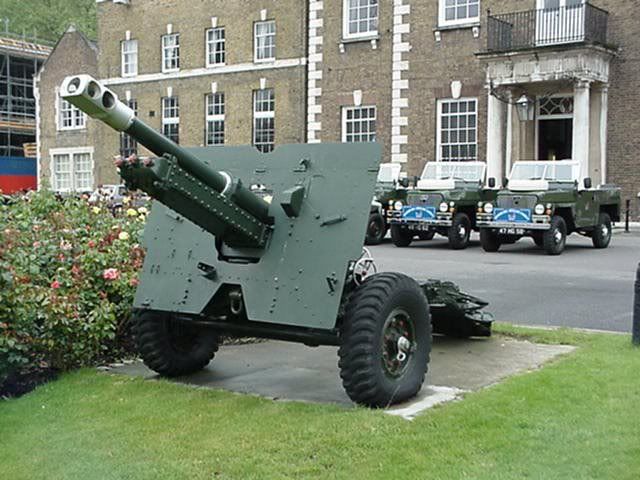
25-pdr
With the adoption of the 25-pdr, the Royal Artillery was reorganised so that actual artillery officers gained much more control over the firing process, especially in situations that required the mass use of large numbers of guns. There would be a separate chain of command for the guns that would follow fire plans that had been created by Royal Artillery officers. Large formations, such as regiments, corps and armies would have artillery advisors with them to help direct the guns. One of the benefits from the reorganization was the formation of “target orders” in which large groups of guns could be controlled by a set of different orders that indicated the size of formations firing, for instance, a ‘Mike’ Target Order would result in an artillery brigade of twenty-four guns responding, an ‘Uncle’ Target Order would result in a regiment’ complement of batteries, seventy-two guns, firing in response, while a ‘Victor’ Target Order would call in a full Corps of artillery (150 – 250 guns) opening fire on a target area that could be as small as a football field. These “target orders” discarded the old Great War doctrine of the “rolling” or “Creeping Barrage” and determined that concentration of fire on one area was the key to breaking either an enemies defenses or his attack. And while the Army continued to work to perfect its use of artillery, its rank and file hoped that the need would not again occur in their lifetimes.
The tenth day of April, 1937 saw the unveiling of a joint endeavor between de Havilland Aircraft Industries, the Air Ministry and the War Ministry that began in the spring of 1936.
In the Soviet Union a project by the Red Army to develop the logical conclusion of ideas espoused by American Army Air Corps officer Brigadier General Billy Mitchell concerning the creation of “airborne forces”. The General’s idea was for military units, usually light infantry, to be moved by aircraft and 'dropped' into battle. Thus they could be placed behind enemy lines, and have an ability to deploy almost anywhere with little warning. The formations would be limited only by the number and size of their aircraft, so given enough capacity a huge force can appear "out of nowhere" in minutes, an action termed by General Mitchell as vertical envelopment. Towards the end of the Great War, the General proposed the implementation of his idea with the suggestion of air dropping elements of the United States 1st Infantry Division behind German lines near Metz. Fortunately for the men considered for inclusion in the attack, the war ended before the plans could be seriously designed.
Following the Armistice, only a few nations continued to tinker with the idea of airborne forces, with the first true paratroop drop was carried out by Italy in November 1927. At about the same time the Soviet Union was also experimenting with the idea, planning to eventually drop entire units complete with vehicles. To train enough experienced jumpers, parachute clubs were set up all over Russia with the aim of being able to draft skilled members (or at least the men) into the armed forces if needed. The plan had progressed to the point that their large drops were demonstrated to foreign observers in 1936.
One of the observing parties, albeit under clandestine circumstances, was the British Army, and within two months of the Soviet demonstration, Major John Rock of the Royal Engineers was given the task of creating a British airborne unit. Based at Ringway, Manchester, Rock’s unit had to make do with minimal supplies. Under Maj. Rock’s guidance and after several demonstrations, it became quite evident to the Imperial General Staff that General Mitchell’s idea of paratroopers was correct. Airborne forces, when employed correctly, offered a tactical and possible strategic advantage due to their insertion to the battlefield by air, thereby allowing them to be positioned in areas not accessible by land or sea. This ability to attack from different locations would allow paratroopers to inflict surprise upon the enemy due to not only being able to evade fortifications that are in place to prevent attack from a specific direction but also prevent the enemy from having knowledge of their massing and impending attack until after the airborne assault troops had already landed and begun their attacks. Additionally the possible use of paratroopers would force an army to spread their defenses to protect other areas which would normally be safe by virtue of the geography and allow for a greater likelihood of a breakthrough on the battlefront. Conversely, due to limits in the amount of weight current aircraft could conceivably care, airborne troops would typically lack the supplies and equipment for prolonged combat operations. This would limit their use from long-term operations and regulate their use to quick airborne assaults with rapid reinforcement by more heavily armed troops. Furthermore, parachute operations had been determined to be particularly sensitive to adverse weather conditions, and still were limited by the aircraft which could used to transport the airborne troops. The first planes were Whitley bombers which had the rear gun turret removed so that paratroopers could jump out of the plane (as opposed to jumping out of a side door). This created great difficulties for the British Paras (as they came to be known with Army circles) due to the effects of the Whitley’s slipstream on the paratroopers as they shuffled out the door. The solution came on April 10, 1937 with the unveiling of de Havilland DH.91 Albatross.
The Albatross was designed by A. E. Hagg late in 1936 under Air Ministry contract as a long-range four-engined transport, specifically for use by the to be yet fully developed paratroopers. Being 70ft long, with a wing span of 104ft and eight inches, the Albatross was powered by four 525 hp Gipsy Twelve Series I engines, the allowed the aircraft to reach a top speed of 225 mph with a full transport load of 29,500 pounds. The RAF, after consultation with Maj. Rock’s command and series of “air drops” to test the compatibility of the Albatross, ordered de Havilland to produce enough DH.91’s to organize four full air wings.
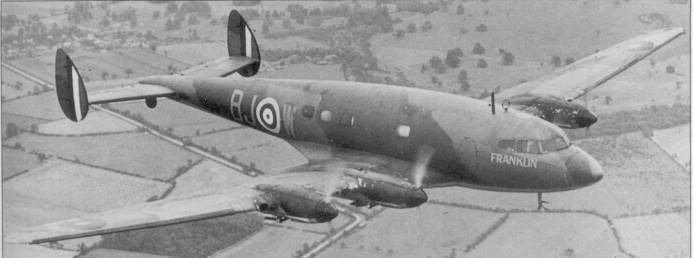
de Havilland DH.91 Albatross
All that was left to complete the endeavor was for the War Ministry, and specifically the British Army, to create enough Paras to fill the newly ordered transports, a task that was set to with the vigor that had come to epitomize the British Army, and indeed the entire British military establishment, since the resurgence of the House of Windsor.
**********
The spring of 1937 also saw other portions of the Empire’s military forces continuing to grow thanks to the Crown’s desire to stave off war by creating the best military to stride upon the field of battle.
On the same day as Leyland Industries unveiling the 25-pdr, General Ironside’s Imperial Grenadier Army was joined by the Northumberland Grenadiers regiment, with a full artillery brigade outfitted with the new 25-pdr. The same day General Wavell’s Home Army based in Portsmith had the Royal Scots Greys regiment (nicknamed Pontius Pilate's Bodyguard within the British Army) attached to it also supported by a brigade of the Royal Artillery equipped with the new 25-pdr cannon.
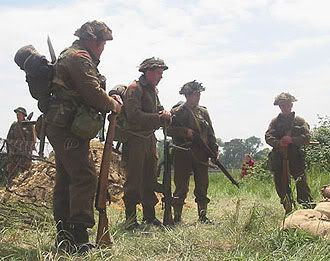
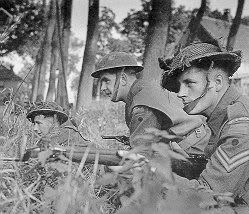

April 5 saw the Royal Marine Corps double in size with the Worcestershire Yeomanry regiment becoming operational and joining General Mountbatten’s command in Plymouth. One month later, the Royal Marines grew again when the Duke of York’s Marines regiment mustered in and were also deployed to Plymouth. The Royal Marines also saw their offensive fire power increase as well as their offensive maneuver capabilities increase with each regiment receiving an attached brigade of artillery and the Corps as a whole receiving five new attack transports for the Corps sole use in the event of deployment by the Crown.
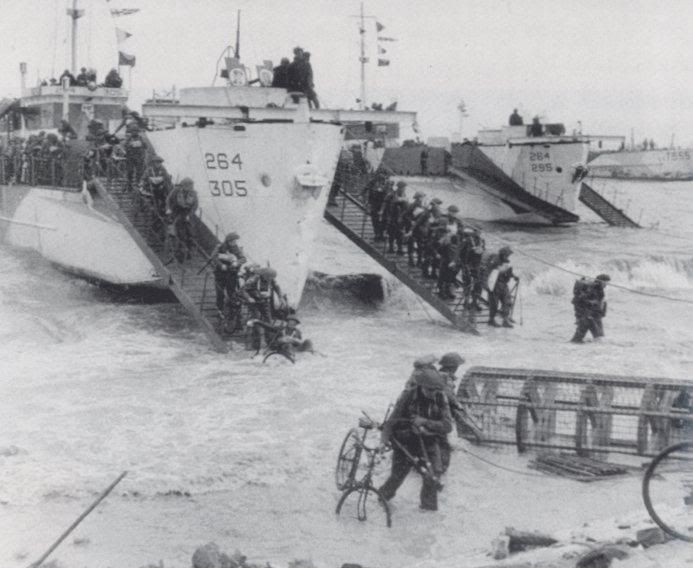
The RAF also saw growth of its forces as April 19 saw the 2nd Tactical Wing become operational under the command of Wing Commander W.J.M. Akerman. The Wing, consisting of Squadron Nos. 325, 781, 451 and 663, were equipped with the Handley Page HP.52 Hampden and were stationed with the rest of the Bomber Command’s Tactical Command at RAF West Malling in Kent.
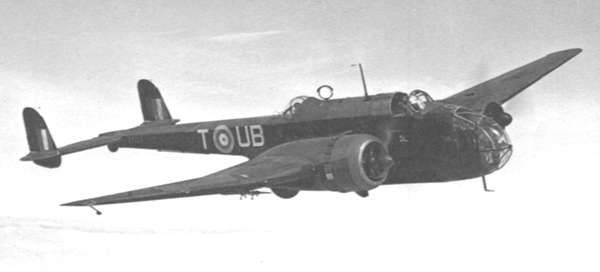
Strategic Command’s Bomber Command A, the first Strategic Command’s full strength Air Groups, lead by Air Marshal Arthur “Teddy” Tedder, reached its full strength of four wings (Alpha Wing consisting of Squadron Nos. 555, 918, 517, 803; Bravo Wing consisting of Squadron Nos. 417, 299, 913, 479; Charlie Wing made up of Squadron Nos. 333, 985, 135, 219; and Delta Wing consisting of Squadron Nos. 465, 601, 824, 701) on April 22 and was stationed at RAF Manston. Strategic Command was at this point still flying the Armstrong Whitworth A.W.38 Whitley but was eagerly awaiting the aircraft being prepared for flight tests in the early summer of 1937.

Next... international intrigue.
Interesting developments vis-a-vis India, and another good technical update. Forgive me if I'm being daft, but will India have representation in the Imperial Parlament or not?
Draco Rexus said:
25-pdr
There is a soft spot in my heart for the 25pdr - one of the most versitile artillery pieces the allies ever used - only to be outmatch IMO by the German 88
Great Update Draco!
Maximilliano - hey, it saves time from having to get gas and such not on the beach!
VILenin - thank you, sir. And no, you are not being daft, but yes India will have representation in th Imperial Parliament, once they get their internal situation squared away.
therev - you know, the more and more I read about the 25-pdr, the more I came to respect and like it. Now, granted I'd rather have a battery of 155mm Long Toms, but for medium grade howitzers, the 25-pdr is pretty hard to beat.
VILenin - thank you, sir. And no, you are not being daft, but yes India will have representation in th Imperial Parliament, once they get their internal situation squared away.
therev - you know, the more and more I read about the 25-pdr, the more I came to respect and like it. Now, granted I'd rather have a battery of 155mm Long Toms, but for medium grade howitzers, the 25-pdr is pretty hard to beat.
Nice update sir, good writing there, very interesting to read of all the developments happening in the Imperial Armed Force. The might of the British Army shall make sure that no one will do anything against the Empire 
Brilliant! Not sure what the new technology really does, but big guns are better ya?


